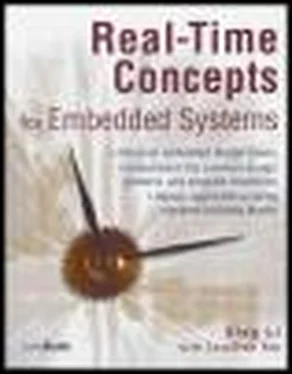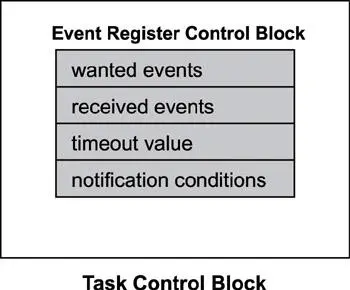
Figure 8.8: Event register control block.
The task specifies the set of events it wishes to receive. This set of events is maintained in the wanted events register. Similarly, arrived events are kept in the received events register. The task indicates a timeout to specify how long it wishes to wait for the arrival of certain events. The kernel wakes up the task when this timeout has elapsed if no specified events have arrived at the task.
Using the notification conditions, the task directs the kernel as to when it wishes to be notified (awakened) upon event arrivals. For example, the task can specify the notification conditions as “send notification when both event type 1 and event type 3 arrive or when event type 2 arrives.” This option provides flexibility in defining complex notification patterns.
8.3.2 Typical Event Register Operations
Two main operations are associated with an event register, the sending and the receiving operations, as shown in Table 8.5.
Table 8.5: Event register operations.
| Operation |
Description |
| Send |
Sends events to a task |
| Receive |
Receives events |
The receive operation allows the calling task to receive events from external sources. The task can specify if it wishes to wait, as well as the length of time to wait for the arrival of desired events before giving up. The task can wait forever or for a specified interval. Specifying a set of events when issuing the receive operation allows a task to block-wait for the arrival of multiple events, although events might not necessarily all arrive simultaneously. The kernel translates this event set into the notification conditions. The receive operation returns either when the notification conditions are satisfied or when the timeout has occurred. Any received events that are not indicated in the receive operation are left pending in the received events register of the event register control block. The receive operation returns immediately if the desired events are already pending.
The event set is constructed using the bit-wise AND/OR operation. With the AND operation, the task resumes execution only after every event bit from the set is on. A task can also block-wait for the arrival of a single event from an event set, which is constructed using the bit-wise OR operation. In this case, the task resumes execution when any one event bit from the set is on.
The send operation allows an external source, either a task or an ISR, to send events to another task. The sender can send multiple events to the designated task through a single send operation. Events that have been sent and are pending on the event bits but have not been chosen for reception by the task remain pending in the received events register of the event register control block.
Events in the event register are not queued. An event register cannot count the occurrences of the same event while it is pending; therefore, subsequent occurrences of the same event are lost. For example, if an ISR sends an event to a task and the event is left pending; and later another task sends the same event again to the same task while it is still pending, the first occurrence of the event is lost.
8.3.3 Typical Uses of Event Registers
Event registers are typically used for unidirectional activity synchronization. It is unidirectional because the issuer of the receive operation determines when activity synchronization should take place. Pending events in the event register do not change the execution state of the receiving task.
In following the diagram, at the time task 1 sends the event X to task 2, no effect occurs to the execution state of task 2 if task 2 has not yet attempted to receive the event.

No data is associated with an event when events are sent through the event register. Other mechanisms must be used when data needs to be conveyed along with an event. This lack of associated data can sometimes create difficulties because of the noncumulative nature of events in the event register. Therefore, the event register by itself is an inefficient mechanism if used beyond simple activity synchronization.
Another difficulty in using an event register is that it does not have a built-in mechanism for identifying the source of an event if multiple sources are possible. One way to overcome this problem is for a task to divide the event bits in the event register into subsets.
The task can then associate each subset with a known source. In this way, the task can identify the source of an event if each relative bit position of each subset is assigned to the same event type.
In Figure 8.9, an event register is divided into 4-bit groups. Each group is assigned to a source, regardless of whether it is a task or an ISR. Each bit of the group is assigned to an event type.
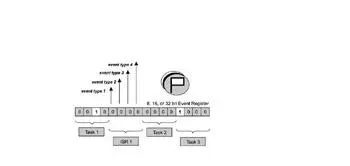
Figure 8.9: Identifying an event source.
A signal is a software interrupt that is generated when an event has occurred. It diverts the signal receiver from its normal execution path and triggers the associated asynchronous processing.
Essentially, signals notify tasks of events that occurred during the execution of other tasks or ISRs. As with normal interrupts, these events are asynchronous to the notified task and do not occur at any predetermined point in the task’s execution. The difference between a signal and a normal interrupt is that signals are so-called software interrupts, which are generated via the execution of some software within the system. By contrast, normal interrupts are usually generated by the arrival of an interrupt signal on one of the CPU’s external pins. They are not generated by software within the system but by external devices. Chapter 10 discusses interrupts and exceptions in detail.
The number and type of signals defined is both system-dependent and RTOS-dependent. An easy way to understand signals is to remember that each signal is associated with an event. The event can be either unintentional, such as an illegal instruction encountered during program execution, or the event may be intentional, such as a notification to one task from another that it is about to terminate. While a task can specify the particular actions to undertake when a signal arrives, the task has no control over when it receives signals. Consequently, the signal arrivals often appear quite random, as shown in Figure 8.10.
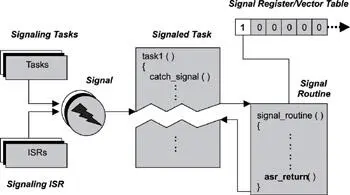
Figure 8.10: Signals.
When a signal arrives, the task is diverted from its normal execution path, and the corresponding signal routine is invoked. The terms signal routine , signal handler , asynchronous event handler , and asynchronous signal routine are interchangeable. This book uses asynchronous signal routine (ASR). Each signal is identified by an integer value, which is the signal number or vector number .
8.4.1 Signal Control Blocks
If the underlying kernel provides a signal facility, it creates the signal control block as part of the task control block as shown in Figure 8.11.
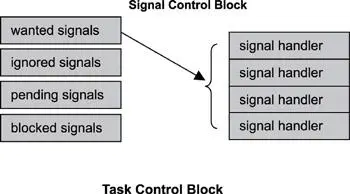
Figure 8.11: Signal control block.
Читать дальше
